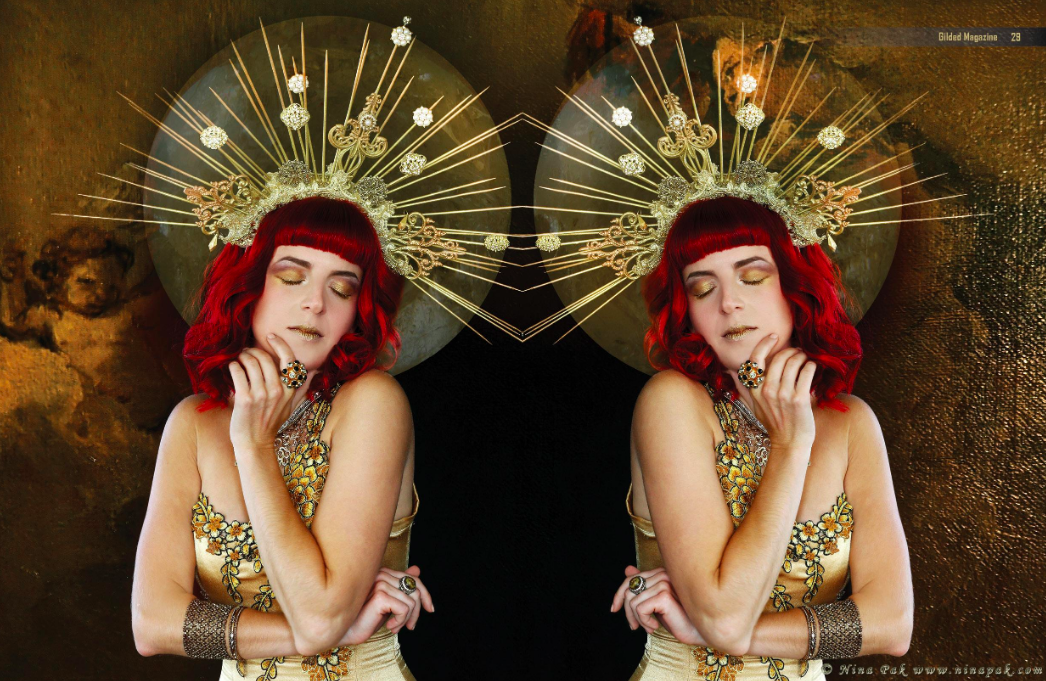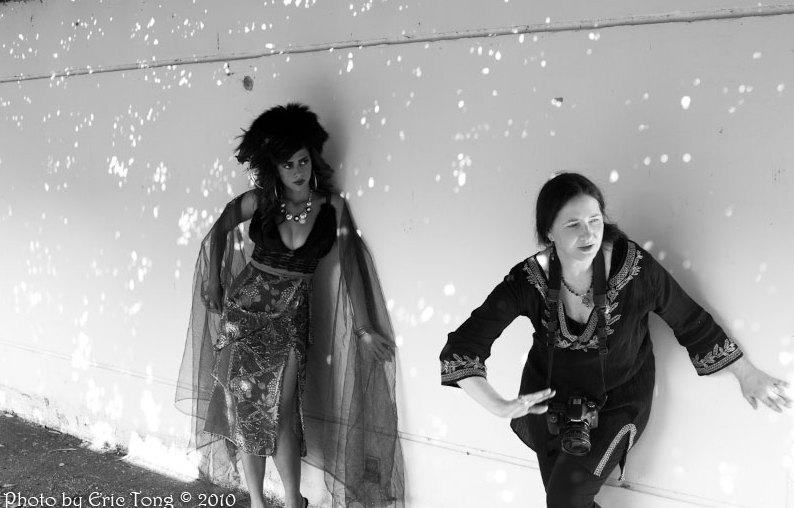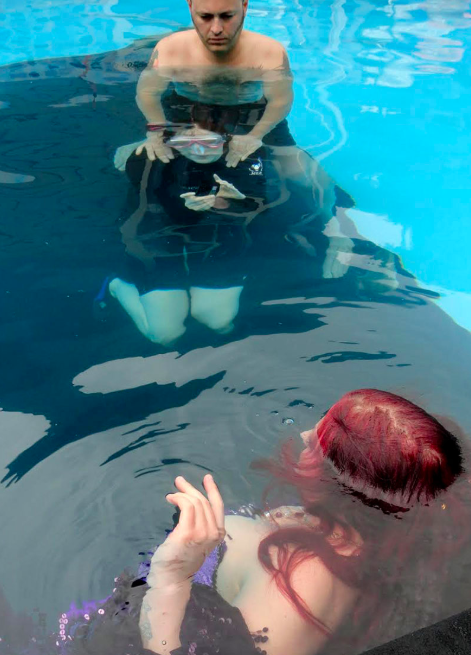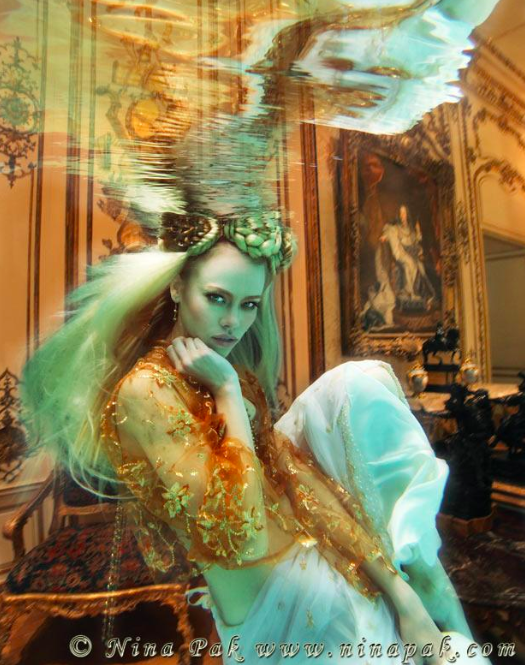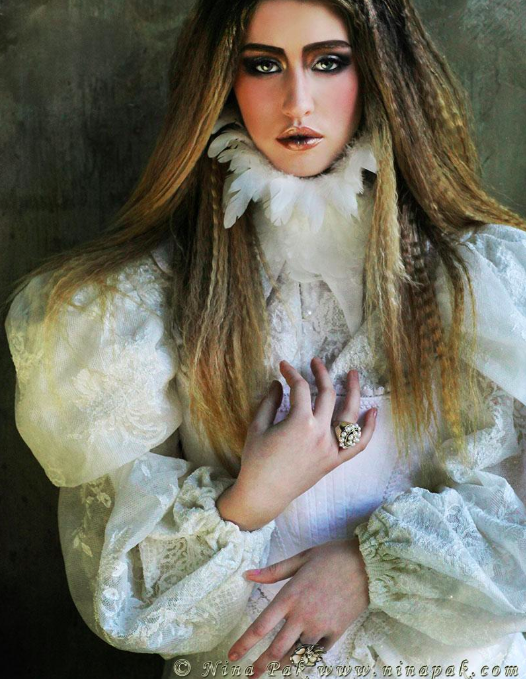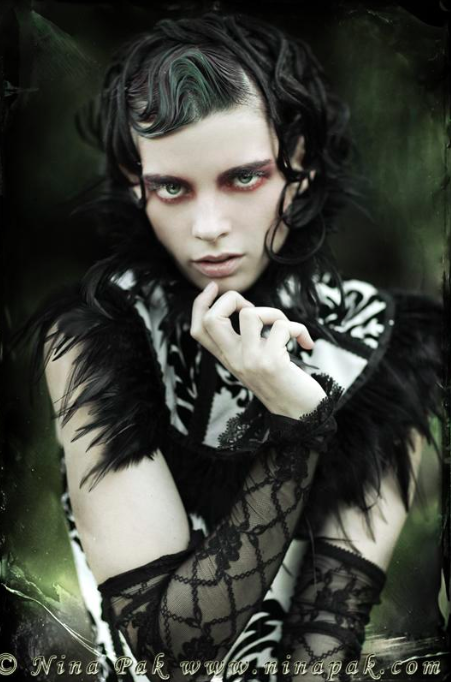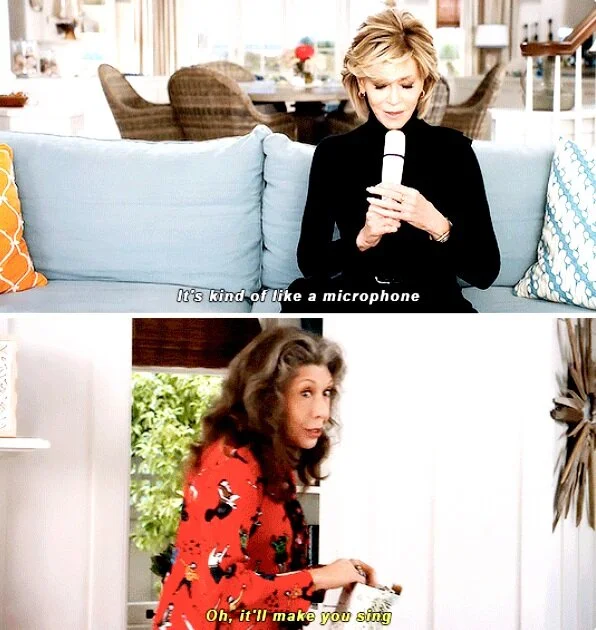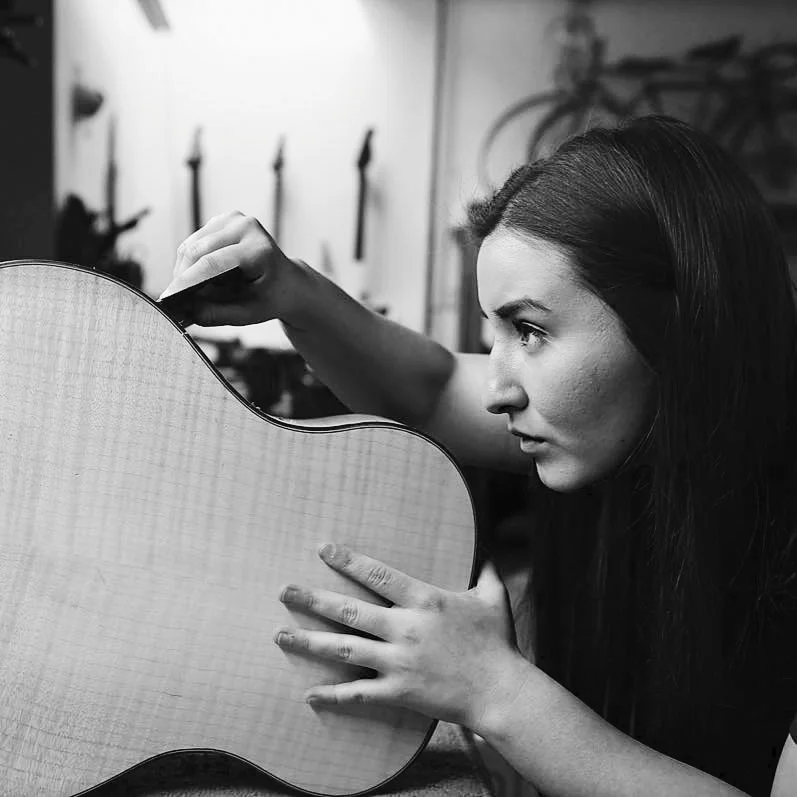Profile No. 6: Nina
If you are a model, high fashion designer, hair stylist, make up artist, or involved in the fashion scene in Vancouver, B.C. — you know who Nina Pak is. Nina is a photographer, editor and integral part of the Vancouver arts scene, whom has carved a very special place in the industry for herself. She specializes and is recognized for her incredible fine art style where she incorporates fantasy, sci-fi, experimentation and digital art to produce beautifully unique images. I wanted to better understand how Nina came to settle into her original style - as I’ve been following her for years - her journey is one that I’m sure all artists can learn from. Nina explains how she found her unique style and how she navigated through the industry.
The fantasy and avant-garde styles of your pictures are so incredibly unique! Understanding that you have been moved by symbolism and mythology, I have to ask when you began to sink into your own personal style of imagery? Were you determined to make it your career and stick to a specific style or was it more a passion side project? When did you come to realize that this is what you would spend the next thirty years building?
To be quite honest I never planned to be a professional photographer! It just sort of snuck up on me over time and eventually I realized I had spent a good portion of my life as a professional photographer.
In my twenties I lived in Santa Barbara, I moved with a boyfriend who was studying at the Brooks Institute, a very prestigious school of photographic arts. I worked and helped put him through school. At that time, I was modeling, acting, and painting. I often took snapshots, but just for fun. It is ironic that he did not end up doing anything with that very expensive education… The years went by and in my thirties an Uncle gave me his professional film camera. I had taken photography classes in high school but I decided to take a course at the local community college to refresh my memory of the darkroom procedures. Of course, I fell in love with the creative process again. At that time, I was printing huge mural sized photo prints using multiple layers of negative, and then painting on them for gallery exhibitions, mixed media art.
When I got my first digital camera it opened up new possibilities and experimentation. Film is expensive, but a digital card can be used over and over. I began to do a lot more collaborative sessions with models and creative makeup artists that were thematic. I used Model Mayhem to connect with other people in my area who wanted to participate. This eventually got the notice of local designers who wanted me to shoot their collections, and a local actor’s agency, so I began to shoot for them and do more editorial work. I also developed a personal business doing fantasy portraits.
When I moved from Arizona to Vancouver, BC, I thought that the move would help my career. I began to take on volunteer work for various events and fashion shows, and other collaborations - I even did stills for Indie Films. After a couple years of paying my dues and getting to know the local venues and businesses, I realized that there were few options to do paid work here. Not that people didn’t want to work with me, they just didn’t want to pay me. Rather than get discouraged by that, I decided to shoot what I enjoy and focus on publishing. I continued working with local designers who did more avant-garde, or wearable art creations.
I have been working with Photoshop since it first came on the market, with this experience I am able to create a polished product that is exceptional. It is because of the high standards I hold myself too, that models and industry talent want to work with me. Having a great team, beautiful models, and wonderful garments and headpieces is only the beginning of a successful shoot. The work that happens after in the post production; editing is where the real magic happens. Since I was not being paid (most of the time) I had the freedom to experiment and do whatever I was inspired to do with the images. Often creating more than one set of final edits for editorial publishing.
I should also mention that I have worked over the years for a few fashion, art and lifestyle magazines as a creative director, curator, designer, and photographer. I believe that everything we do, and all our past experiences, contribute to what we create — it informs our work. What we do for a living, what we read, what we experience, what we dream — it all goes into that art. I have been on both sides of the camera; being a model in my youth helped me understand what I wanted from a model when I began to shoot, and allowed me to give to my muse what they need. Having been a painter, I found that my editing process had a distinctly painterly quality — and indeed I paint right on the image — now it is a digital process. But the idea began with the hands-on process of creating mixed media art. I also read a lot of Sci-Fi and Fantasy, these books foster daydreams which influence my work a great deal.
And you are recognized for your productions! For how you really collaborate with a team, like the avant-garde designers you mentioned. I’ve always thought it was so important for artists to collaborate with one another versus trying to make it one solo-operation or just dictate what everyone is going to do for them.
When I first started out doing creative collaborations or Editorial Fashion, I would do a casting call on various social media sites. As I mentioned previously, at first I used Model Mayhem, but over time I found it easier to use FaceBook. Any platform that has an audience of like-minded professionals in the industry will work. People like to take part in projects where they will have some creative input, because that is what is helpful for their portfolios. I outline the basic theme, or concept, often giving the team members a mood board. Then I trust my team to do their best. At first, I ran into some difficulty with makeup artists or hair stylists who were creative in a way that didn’t work for what I wanted, or they took too long. This is just a natural part of the business; you just have to make the best of the situation and try to communicate what you want without hurting anyone’s feelings… but sometimes it’s just not a good fit. When I got something that wasn’t working, I would correct it in post production, which is one of the reasons I became skilled in this part of the process. But most of the time I have found that everyone enjoys the shoot, feels inspired and we get something really wonderful. I am often amazed how different members of the team will bring exactly the right elements to the shoot that match with what is needed, as if by magic things come together perfectly.
Talking about cultivating your specialty or style that you truly love, what has been your experience with focusing on one style of photography? Were you ever swayed in another direction for job opportunities or uncertain about your style?
I experiment a lot, and I think you have to be willing to ruin the creation, in order to push your limits, and it is during this process of discovery that happy accidents occur. My style just grew over time, in part with experience of working with the tools and in part by bringing what I see in my dreams to life.
I do produce cover art and at times there are very specific details that need to be included. I just create something with those specificities incorporated into my style. Sometimes the publisher loves it, and sometimes it is not quite on the mark, and they go with a different design, different artist. The publishing industry is very competitive and now that the digital process is more affordable and more people are creating, there is a lot more competition. I feel that it is best to be true to your own style and hope that what you do fits with the needs of the client.
For me personally, even though I experiment a lot, my work has a certain noticeable style. I have a variety of different themes: Editorial Fashion is focused on the garment but my edits often have other backgrounds or elements layered in post production; Fantasy and Sci-fi themes often use only the face and hands of the model and everything else, including makeup and environment is created digitally; painterly portraits often incorporate historic characteristics, but the post production and layering effects I use, are similar to those used in my other work. The theme is different, but the style is using enough common elements to be recognizable as something I do.
I guess my point is, if you are true to yourself, if you really pour yourself into your work, then you “Do You” and no one else can do what you do. It will be recognizable.
How has this current global climate impacted or challenged you as an artist? I feel like the whole world has slowed down and is making individuals re-evaluate where they are.
It has completely derailed the plans I had for the year, and possibly will be another year or two before we can even think about doing the projects that were planned. I partnered last year with David Chen to produce a fashion show at the Vancouver Club, the theme was inspired by the Renaissance. It was a great success but we learned so much from the experience and had plans for another show this fall. Because we want to be able to pay our models and team members, we had a lot of projects planned to support the show. Package rates for designers that included publication; in a magazine that was to be printed in China. Workshops for models and photographers to train them for the runway and to assist photographers in the editorial post production process, giving all participants opportunities for publication and inclusion in the show.
Now, many designers have no income to afford the materials to make a new collection, and creative stylists’, photographers and models are not able to pay their rent or basic needs, so spending money on even affordable workshops is out of the question. Getting advertisers from the community to buy ads in our magazine is unlikely. So, everything is put on hold, with the hope that when the social isolation is over, and a new normal is back, there will be some way to manifest those plans.
For my personal projects, I am not doing any editorial shooting with teams or designers. All the magazine submissions I am doing now, are using images I took previously which are in my archives. Starting just a couple weeks ago I invited one model each weekend to come for a one-hour photo session. I shoot her wearing all black against a black backdrop then use those images to create digital art. I have no idea what I will do with these experiments, but they are fun to create, no pressure and no expectations. Maybe some will make it onto book covers.
Looking back on your career, is there anything you wish you had known when you were first starting out?
First of all, I should say that I have always been driven to make art. When I can’t do something creative, I get depressed. So even if I could go back in time and give myself advice, I would probably still do what I did. Maybe I would also be smart enough to diversify, and spend more time learning processes that would give me an income. But it is hard to tell young people not to spend time doing things that are exciting and fulfilling, even if they won’t be able to support themselves with those efforts.
From my experience, there is not much money in photography - especially as a woman. Sure, there are a few who do well; traveling to do workshops, or those who already gained some notoriety before the digital age. But most commercial contracts go to men, even men who are less talented than a woman competing for the job. I wish the world looked for talent above all else, but that is unfortunately not the case.
Harsh realities aside, there are ways to use your talents that will give you an income doing digital artistic techniques. It pays well and is always in demand. Nearly all films now have some digital elements in the post production process, some films are almost entirely created by digital artists. There are many different specialties in the development of these films, a lot of options to explore. If I had known this would be the future trend, when I was younger… I would have trained for it. But success is measured in more ways than what is monetary…
You can follow Nina on instagram here and find out more on her website.

